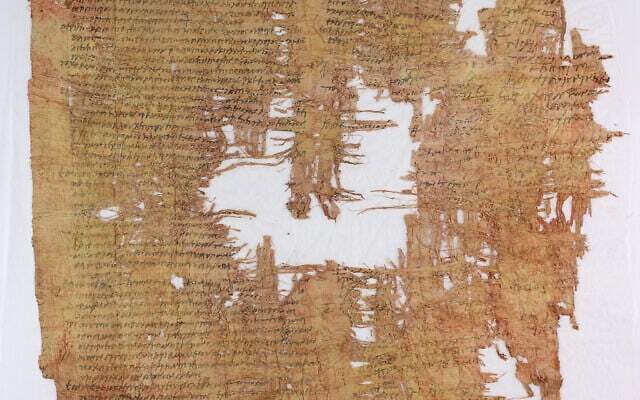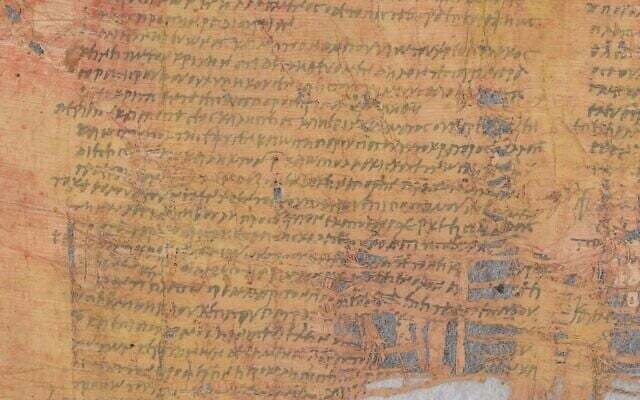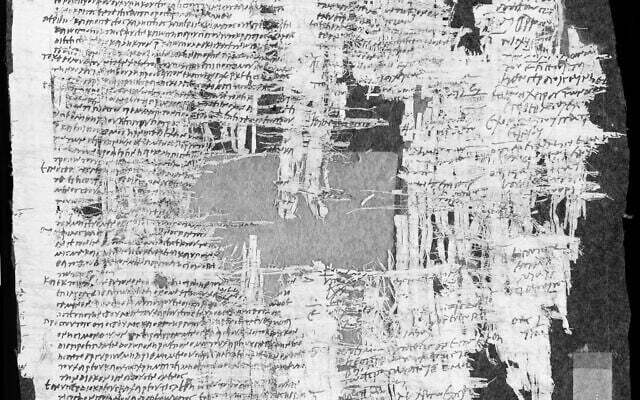In a dusty corner of the Israel Antiquities Authority’s storeroom, a 1,900-year-old papyrus sat untouched, waiting to reveal its secrets. Recently deciphered, this rare document offers a glimpse into the Roman legal system during its rule over ancient Judaea, shedding light on a little-known court case just before the Bar Kokhba Revolt. With its revelations about criminal trials, slavery, and forgery, this papyrus now serves as one of the best-documented accounts of Roman justice from the region—second only to the trial of Jesus.
Introduction: Uncovering Ancient Secrets
A groundbreaking discovery has brought to light a 1,900-year-old papyrus, now known as “Papyrus Cotton,” which was deciphered by a dedicated team of Israeli and Austrian scholars. Led by Dr. Anna Dolganov of the Austrian Academy of Sciences and Dr. Avner Ecker from the Hebrew University of Jerusalem, this ancient document reveals an important criminal trial from the Roman era in the region of Judaea.
The papyrus provides a rare glimpse into the legal system during Roman rule, offering new insights into the criminal justice system of the time and the period leading up to the Bar Kochba revolt. This discovery not only deepens our understanding of Roman law but also uncovers secrets of life in an era marked by unrest and rebellion.

Video
Watch the video to learn about the Greek papyrus found in the Judean Desert, revealing Roman corruption. This discovery adds a new layer to our understanding of ancient history!
The Trial of Saulos and Gadalias
The papyrus details a courtroom drama involving two Jewish individuals, Saulos and Gadalias, who faced charges related to criminal activity. Saulos and Gadalias were accused of forging documents to evade taxes and to manipulate the status of slaves. The papyrus shows a prosecutor’s notes, preparing for the trial, offering a rare look at Roman legal strategies and the formalities involved. Forgery and tax fraud, punishable by severe penalties, including hard labor or death, were serious offenses in Roman law, underscoring the gravity of the case.


While Saulos was accused of selling slaves to a friend in Arabia, evading taxes in the process, the question arose as to whether the slaves were being sold under fraudulent terms or if Saulos had attempted to redeem Jewish slaves, following the Jewish tradition of setting slaves free. The case hinted at much larger themes—questions of social structures, taxation, and the extent of Roman control over local Jewish populations.
Historical Context: The Roman Empire in Judaea
Understanding the legal proceedings described in the papyrus requires considering the broader historical context of Roman rule in Judaea. In the early 2nd century AD, the region was part of the Roman Empire, and the relationship between the local Jewish population and Roman authorities was fraught with tension. Emperor Hadrian, who reigned from AD 117 to 138, is noted for his visits to Judaea and his efforts to consolidate Roman power in the region.
This era was marked by growing unrest among the Jewish population, which eventually culminated in the Bar Kokhba Revolt, a violent rebellion against Roman oppression. The trial depicted in the papyrus occurred just a few years before the revolt, adding an element of political tension to the case. Jewish elites, including those involved in the trial, often found themselves caught between maintaining their status in Roman-controlled Judaea and the growing calls for resistance against Roman rule.

The Role of Slavery in Roman Judaea
The papyrus also touches on an important aspect of ancient life: slavery. It reveals that at least one Jewish family owned slaves, a topic that has long been debated among historians. In ancient Judaea, the practice of slavery was not uncommon, and the papyrus gives a rare glimpse into how Jewish families navigated this practice.
The papyrus does not clarify whether these slaves were Jewish or non-Jewish, but it raises intriguing questions about the social and cultural norms of the time. In Jewish law, there was a tradition of redeeming slaves, which might explain Saulos’ actions. However, whether this act was done to circumvent Roman taxation or as a genuine effort to free slaves remains unclear.
The Language and Nature of the Papyrus
The papyrus is written in Greek, the language of the Roman Empire in the eastern Mediterranean during this period. Greek was not only the language of commerce and administration but also the medium of legal documentation in many parts of the Roman world, including Judaea. The fact that the papyrus was written in Greek highlights the continued influence of Hellenistic culture and Roman governance in the region.
One of the most remarkable aspects of the papyrus is its genre. The text is not a formal court transcript, but rather private notes from a prosecutor preparing for the trial. Such documents were rarely preserved, as they were typically discarded after the trial concluded. This makes the papyrus particularly valuable for scholars studying Roman legal practices, as it provides an inside view into the legal processes of the time.

The Missing Pieces: What We Don’t Know
Despite the significance of the papyrus, many details remain unclear. Parts of the document are missing, and questions persist about the trial’s location, the citizenship status of the defendants, and the ultimate outcome. The trial was likely interrupted by the Bar Kokhba revolt, a major event that reshaped the political landscape of the region and may have led to the papyrus being abandoned in the caves of the Judaean desert.
As the papyrus was stored in the desert for nearly two millennia, the context of its abandonment adds an element of mystery to its discovery. The document may have been discarded by the prosecution, or the individual who carried it with them may have fled the area amidst the impending rebellion.
The Broader Implications of the Papyrus Discovery
The discovery and translation of this papyrus have broader implications for our understanding of life in Roman Judaea. It provides concrete evidence of the legal and social practices of the time, shedding light on the lives of ordinary people caught in the machinery of Roman rule. The detailed notes also offer a rare look at how Roman officials handled criminal cases in the provinces.
Furthermore, the papyrus serves as a reminder of the tensions between Roman authorities and local Jewish populations, particularly during times of political unrest. The Bar Kokhba revolt, which occurred shortly after the trial, serves as a powerful backdrop to the case, highlighting the precarious position of the Jewish community in a time of rebellion and repression.

Conclusion: A Glimpse into the Past
The 1,900-year-old papyrus, now known as Papyrus Cotton, provides invaluable insights into the legal system of the Roman Empire and the life of the Jewish population in Judaea. Although much of the document remains fragmented, it has already changed how historians view Roman-era Judaea. The trial of Saulos and Gadalias, captured in this papyrus, brings to life the complex interactions between Roman law, Jewish customs, and the personal struggles of those living under Roman rule.
This discovery is just one example of how ancient documents continue to illuminate the past, providing a deeper understanding of the cultures, legal systems, and everyday lives of ancient civilizations. As scholars continue to study the papyrus, there is no doubt that more revelations will emerge, further enriching our knowledge of this fascinating period in history.
Video
Check out the video to learn about an ancient 2,200-year-old scroll that offers proof of Jesus as God before His birth. This discovery is sure to intrigue anyone interested in history and religion!



